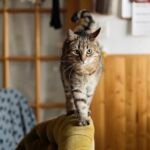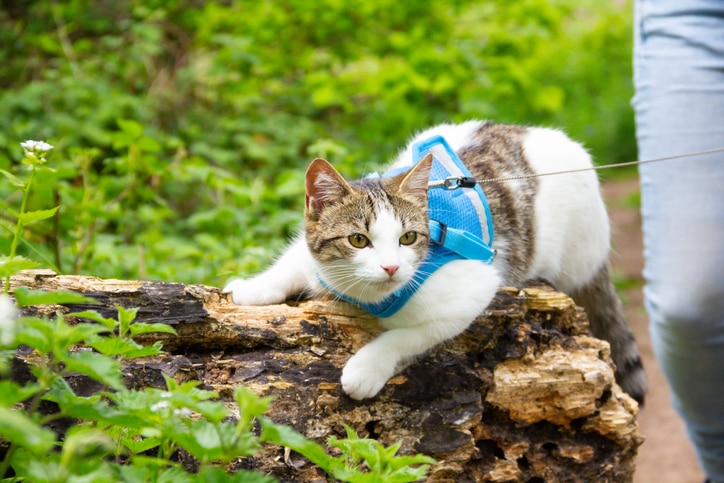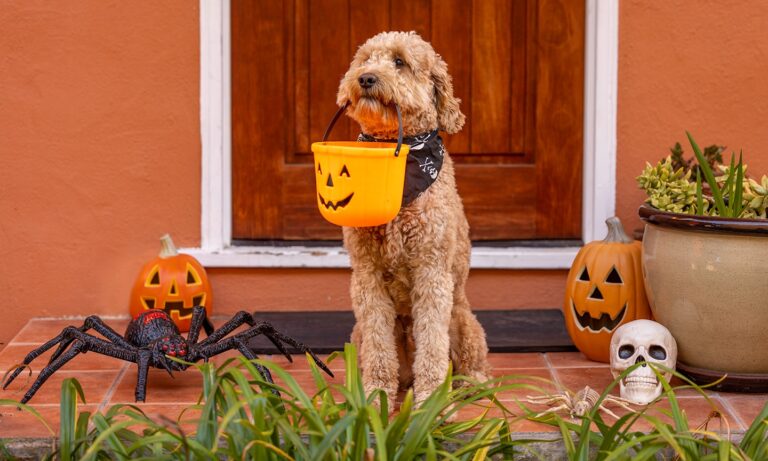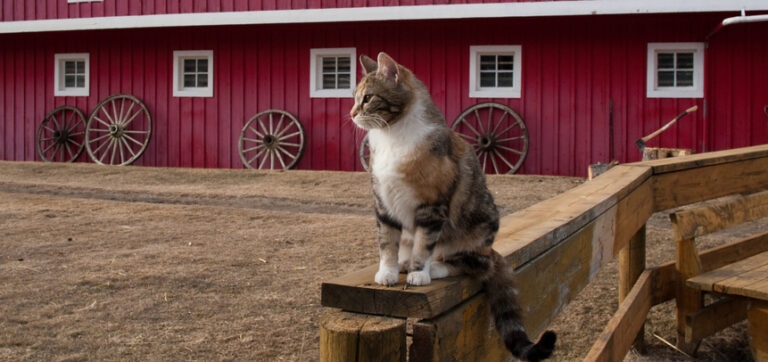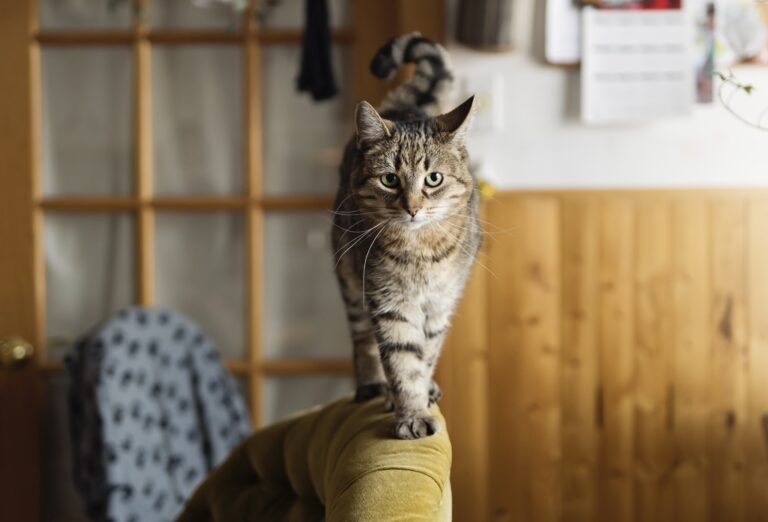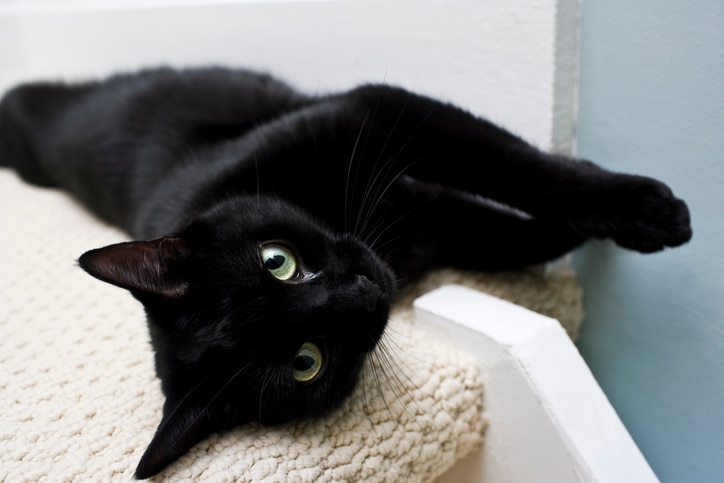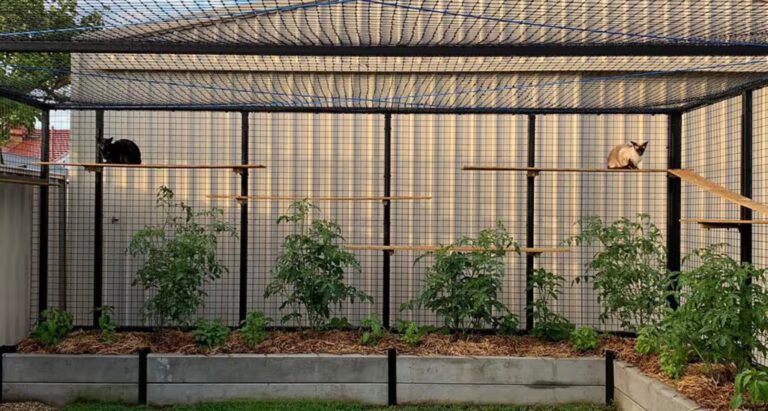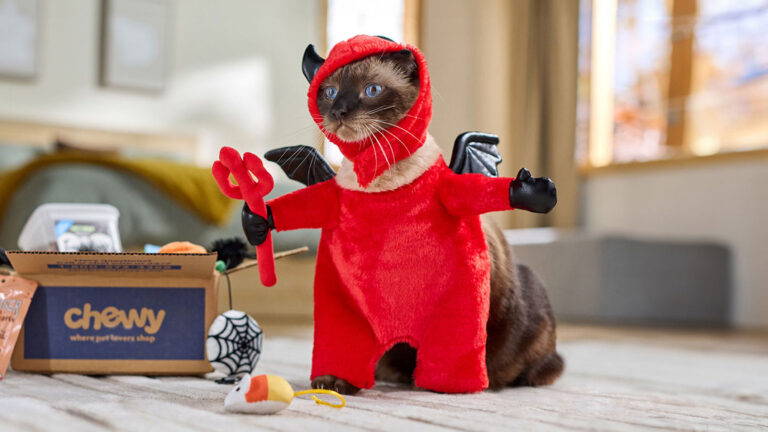Persian Cat Coat Patterns and Colors
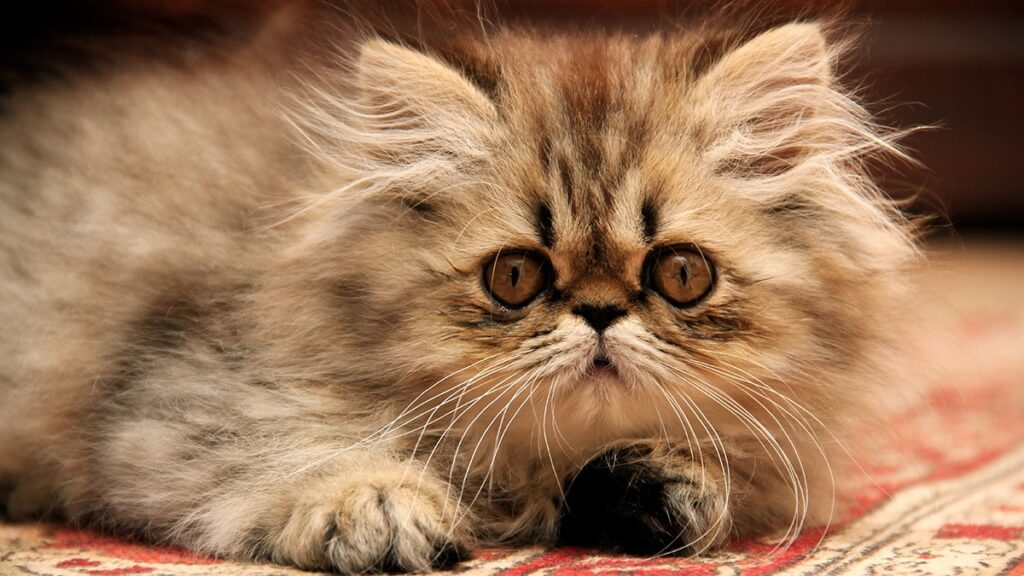
Photo by Chewy
According to the Cat Fanciers’ Association (CFA) as of 2005 approximately 40% of all pedigreed cat registrations were for Persians; and although it varies with the time of year, almost one-half of all cats at a cat show will be Persians. Cat fanciers have sought to equalize competition among breeds by dividing the huge Persian class into smaller groups. For convenience, this is done on the basis of similar colors or patterns.
The seven groups recognized by the largest registry, the CFA, are: Solid Color, Silver and Golden, Shaded and Smoke, Tabby, Parti-color, Calico and Bicolor, and Himalayan.
Each of these groups or divisions competes only with itself, as though it were a separate breed. No Best Persian award is given, for example; only Best Solid Color Persian, Best Tabby Persian, etc. Some of the colors and patterns go back to the beginnings of the cat fancy in England, others are quite new.
Solid Color Division
White
The glistening-white Persian has always been one of the most prized. Because this is probably the most challenging color, the owner of a white must be ever-vigilant to maintain the cat’s cleanliness.
Exhibitors have many well-guarded secrets for presenting immaculate cats, but they all agree that the key to maintaining the white Persian is to prevent soiling, rather than cleaning it afterward.
Several different coat types occur in whites. The most difficult to care for is the “cotton” coat, which is soft, mats easily and requires constant combing to prevent knots from forming. More desirable, from a maintenance standpoint, is a harder, slicker coat. These cats have less undercoat to tangle, but as a result, do not produce as eye-catching a halo effect because the coat drapes rather than stands out from the body.
The whites are divided by eye color, with the copper-eyed white being the most familiar. Eye color in this variety ranges from deep gold to brilliant orange to almost copper. Blue-eyed whites are less common, and generally don’t have the depth of eye color readily found in the copper-eyed cat. The blue-eyed variation occurs when a white cat carries the gene for white spotting.
All kittens are born with blue eyes, but at about 6 weeks of age a second round of color is deposited in the eye, resulting in a change to gold or green. The white-spotting gene blocks this migration of color and causes the eyes to remain blue. Unfortunately, at the same time it often interferes with the final development of the inner ear, which completes its own development after birth. As a result, some kittens will be blue-eyed and deaf.
Sometimes the white-spotting gene only affects one eye and results in a unique syndrome called odd-eyed white. One eye changes to copper, while the other remains blue. If both eyes have intense color, the result is a stunningly beautiful cat. Sometimes a white kitten will show a spot of color on the top of its head. This “skull cap” gradually diminishes in size as the kitten grows, and usually disappears at around 8 to 10 months of age.
Black
Since the infancy of cat breeding, the black Persian has also been considered highly desirable. Because they are as dramatic as the whites, the early classes of blacks were quite small in number.
The ideal black—with a dense, coal-black coat, sound (the same color with no variation) from the roots to the tip of the hair—is almost impossible to achieve. The standard calls for the coat to be free from any tinge of rust at the tips, and without a smoke undercoat. But in actual practice, no black cat with any coat length can be without variation from root to tip. Judges seeing such a cat will immediately suspect the application of dye. The nature of color is that it will be deposited intensely at the tip as the hair first emerges, and will get progressively lighter along the shaft as the hair grows. Sunlight damages the perfect black coat because it causes oxidation at the tips, just as it does with human hair. The result is a reddish or rusty look.
Kittens are particularly prone to a smoky look because the early kitten coat is woollier than that of the adult. The color is thus duller and paler than the desired coal black. Often in a 4- to 8-month-old kitten the longer hair—especially the ruff and leggings—will be a smoky black, and the shorter hair on the face and shoulders will be almost ebony.
The dramatic copper eye color required in this division is an especially effective and dramatic color combination in a black Persian of any age. Each coat color has a stipulated eye color. All of the Solids, except white, and most of the patterned cats must have brilliant copper eyes. The two exceptions are the Silvers and Goldens, which must have green eyes, and the pointed Himalayans, which must have blue eyes.
Blue
In the latter part of the 19th century, Persians with gray coats became popular, probably because Queen Victoria proudly owned several. Fanciers use the term “blue” to describe this color.
Although several cat breeds share the color name, the ideal is slightly different in each. The proper Persian blue should be pale and even.
The texture of the coat is soft and much more porous than the slicker coat of the black. Instead of having a shine, it looks powdery, which contributes to the delicacy of the color. This creates quite a challenge during bathing, because the hair absorbs and holds enormous quantities of water. The blue coat may take twice as long to dry as any other color.
Red
Perhaps the most difficult of the Solid colors is red, the term given to a wide range of reddish-orange hues in cats. The color can be a vibrant mahogany or any one of several shades of orange all the way down to a pale ginger. For some reason, this color almost always fails to conceal the tabby lines hidden in each cat’s genetic makeup.
Cats carrying the mackerel tabby lines (see Tabbies) tend to appear more even in color than those with the broad, classic-tabby swirls. The longer coat also tends to blur any marks. These cats are usually not faulted for tabby marks on the face and legs, although an evenly colored cat is the ideal.
When these cats are kittens, it’s often difficult to determine whether if it will be a Solid or a Tabby. Some adults have even had a whole show career as a Solid red, only to shed a coat and have the new one come in with clear tabby marks. In such a case, the cat may be reregistered and begin competing for all titles again.
Cream
Genetically a dilution of red, these cats are subject to the same tabbying. A good, even cream will have the same delicate powdery look of a good blue.
The standard calls for a level shade of light-buff cream, without markings, which is evenly colored from tip to root. In evaluating this, as with all colors, it’s necessary to remember that the standard describes the ideal color.
Chocolate: This color is fairly new to the Persian, coming from the introduction of the pointed Himalayan. Bred to the solid-color Persian, the Himalayan pattern of points, which is recessive, can be made to disappear. This leaves the cat clothed all over in the color of the points, and the result can be a rich, warm, chocolate-brown cat with copper eyes. This color is still quite rare and a good specimen is hard to find. As with black, there is often a smoky look to a young kitten or cat’s coat.
Lilac: The lilac Persian also comes from the Himalayan color spectrum. The color should be a rich, warm lavender with a pinkish tone. Like all dilute colors, (a paler version of the original—cream instead of red or blue instead of black. It’s the result of a gene that causes fewer color granules to be deposited on the hair shaft; therefore we see less or lighter color) it should be pale and even in tone.
Silver and Golden Division
This is a coat pattern, as well as a series of colors. A dominant gene inhibits the production of color on the lower part of the hair shaft, leaving color only at the tip.
This color can have the effect of a light frosting or a heavier shading, depending on the amount of the hair shaft that’s colored. The second identifying feature of this division is eye color: All the cats must have green or blue-green eyes. The color is usually intense and dramatic, especially when coupled with the black mascara lines that must outline the eyes, lips and nose. The coat of the Silver is particularly fragile, and requires a gentle touch during the daily grooming and routine bathing.
Chinchilla Silver
This delicate color should be pure white on the chest and stomach, with the head, back, tail and legs lightly tipped in black to create a sparkling silver appearance. The effect is that of the chinchilla, whose pelt is prized for fur coats. Cat fanciers prefer the coat with the cat still inside! In addition to the deep-green eye color, the face is further highlighted by a brick-red nose outlined in black.
Shaded Silver
Like the chinchilla, the shaded silver must be pure white on the chest and stomach, but is much more heavily tipped so that a mantle of black shades down the coat. It’s sometimes difficult to determine whether a cat is chinchilla or shaded because the amount of undercoat can change the look.
When the cat is shedding and has lost a significant portion of its coat, or is a young kitten with coat not yet fully developed, there is often a question. Experts usually look at the amount of color on the face and legs as a determining factor in this case.
Chinchillas will be almost pure white on the face and legs, but shadeds will show some tipping.
Chinchilla Golden
The chest and stomach of this cat should be a rich, warm cream. Black tipping should be apportioned as with the silver, and the contrasting nose leather should be deep rose rather than brick red.
Although this color has existed for many years, most breeders chose to work with the more dramatic silver, and have consequently come much closer to perfection in that color. The goldens are often plagued with an excess of tabby markings that interfere with the delicate shading. Shaded Golden: The ideal is a cat with a clear, rich cream undercoat mantled in black, just like the shaded silver.
Shaded and Smoke Division The cats in this division all have copper eyes. Like the Silvers and Goldens, the undercoat should be pure white.
Shell Cameo (Red Chinchilla), Shell Cream (Cream Chinchilla), Shell Tortoiseshell and Shell Blue-Cream
Like the Chinchilla Silver, all of these cats have just a sparkling of color over a pure white undercoat. The cameo is aptly named, having the subtle suggestion of red. A shell cream is the same color pattern as any shell (or chinchilla). The coat is white, lightly tipped with cream over the back. It’s a very subtle color combination. The tortoiseshell (see Parti-Color Division) and blue-cream are a combination of two colors in the tipping. All are quite rare and extremely beautiful.
Shaded Cameo (Red Shaded), Shaded Cream, Shaded Tortoiseshell and Shaded Blue-Cream
The tipping on these cats is much deeper, as with the Shaded Silver. Again, coat condition can make it difficult to distinguish between the two degrees of tipping.
Black Smoke, Blue Smoke, Cream Smoke, Red Smoke, Tortoiseshell Smoke and Blue-Cream Smoke
The smoke colors show the fullest expression of tipping. The coat appears at first glance to be that of a normal, fully colored cat. When parted, the color extends as much as halfway down the hair shaft, giving way at that point to pure white. This white undercoat is clearly apparent when the cat is in motion and shows in the longer frill around the neck.
Identifying a true Smoke can sometimes be difficult because the white undercoat can almost disappear when the cat is out of coat. Only with a full undercoat will it be dramatic; at other times the coat only appears to get lighter toward the skin. This can be frustrating for the show exhibitor, who can often count on no more than two months out of the show year to perfectly fit the standard.
When a question exists regarding the color, breeders often look at the short coat of the face and legs, which will be much less affected by shedding. When the hair is parted, these areas should always show at least a narrow band of white at the base.
Tabby Division
The cats in this division all sport a pattern of stripes on a lighter background. There are a number of tabby patterns, but only two are accepted in the Persian breed: the classic and the mackerel.
The Classic Tabby has broad, well-defined markings. Bracelets encircle the legs, and the tail is ringed. The neck and upper chest should display a series of necklaces. On the forehead is a letter “M”, and there should be swirls on the cheeks and mascara lines extending from the outer corners of the eyes. Beginning above the “M,” three lines extend over the head and down the spine to the tail. Circles forming the outline of butterfly wings show on the shoulders and sides. The larger “wing” on the sides should be composed of a solid blotch encircled by one or more unbroken rings. The chest and stomach ideally show double rows of buttons (a round spot that looks like the shape of a button). This pattern is best for the Persian because it’s broad and can still be clearly seen even with long hair. When the coat becomes very long and flowing, the pattern is often so blurred that it’s almost indistinguishable in some colors.
The Mackerel Tabby has most of the same markings, though they’re narrowly penciled. Instead of circles on the shoulders and sides, lines run down the sides at right angles to the spine lines, forming a fishbone pattern. Red Tabby: This pattern has deep, rich red markings on a lighter red background. The depth of color can vary greatly, and many red tabbies are shown as Solids because the pattern cannot be seen clearly.
Brown Tabby
The ground color should be a coppery brown marked with black lines. Because of the high contrast between the two colors, the pattern is usually clear. These cats are affectionately nicknamed “brownies.”
Blue Tabby
Seldom seen, this is a pattern of deep blue on a bluish-ivory background. Ideally, both colors should have a patina of warm fawn overtones, which keep it from being a cold color. It’s difficult to get good contrast in this color.
Cream Tabby
Markings are buff on a pale cream. This is a beautiful, delicate color that’s almost impossible to accomplish well in a longhaired cat. Chocolate Tabby: Newly accepted to the tabby class, again from the cross with pointed Himalayan colors, this is a rich combination of dark chocolate markings on a milk chocolate background.
Lilac Tabby
Also derived from the pointed Himalayan color, the ground color is a pale, frosty, pinkish lavender with markings in a darker lavender. Very rare!
Cameo Tabby and Cream Cameo Tabby
In these cats the ground color has been lightened to off-white, providing higher contrast. The cameo has marks in red, and the cream cameo has markings in cream. Both colors are rare.
Silver Tabby
Here the influence of another gene system changes the ground color of the brown tabby to a pale, clear silver. The markings remain black. Normally a dramatic combination, in the longhaired cat it’s usually softened and seldom clearly defined. Any brown or cream tinge is considered a fault. All Persians carrying the silver gene may have green or hazel eye color, as well as copper.
Blue Silver Tabby
The bluish-ivory background has been changed to bluish silver, a fairly subtle change. The markings must be in a sound blue, sound meaning the same — even in color from tip to root. This is a newly recognized color.
Brown Patched Tabby, Blue Patched Tabby, Chocolate Patched Tabby and Lilac Patched Tabby
These cats are actually a combination of two tabby colors on one cat. The brown patched is both a brown tabby and a red tabby on different parts of its body. The dilute blue is matched with dilute cream tabby. More soft and subtle are the chocolate/red and the lilac/cream combinations. These patterns are quite rich in the random mix of colors.
Silver Patched Tabby and Blue Silver Patched Tabby
These are identical to the other patched tabbies with the exception of the silvered ground color and white undercoat. Patched tabbies are all females except in rare instances where a genetic anomaly occurs. Male cats of these colors cannot be registered or shown (see Parti-color Division).
Parti-Color Division
The cats of this division have had a roller-coaster existence in the cat fancy.
In early shows, the tortoiseshell was quite sought-after, and some breeders even complained that male judges favored them over other colors.
Around the turn of the century their popularity waned and they—along with their dilute form—were even regarded as undesirable until well into the 1930s. The genetic composition of the Parti-Color cats is such that only females are recognized in this group. In cats, color is linked to the female (X) chromosome. It will program the cat to be a version of either black or red. Males are formed by the joining of an X and a Y chromosome. Females are created when two X chromosomes combine. Occasionally each of the two X chromosomes will instruct the cat to be a different color. This results in patches of two basically different colors on the cat. True males can only be one of the two colors since they inherit only one X chromosome.
Rarely, an anomaly will occur in which a cat has three sex chromosomes: XXY. Such a cat may have the outward characteristics of a male, and may even be fertile, but isn’t genetically normal. For this reason, registries generally refuse to recognize such cats.
Tortoiseshell
Depending upon the association, a tortoiseshell is a black cat with patches of red or intermingled areas of red. All agree that black should predominate. The red areas may contain several different shades of red. This occurs because the tabby marks may be visible in the red only, so we see two different shades of that color. These cats are referred to as “torties.” One with more than the desired amount of red will be called a “hot” tortie. Interestingly, the red patches spread in size as the cat grows. The smokiness of the young black coat often hides the full effect of the pattern on a kitten.
In adults, the red can appear in clearly defined areas or generally intermingled with the black. The two styles look quite different. Some associations stress a red or cream blaze on the face. The patterning on the face is important to all associations because it can either create a pleasant expression or make the cat look asymmetrical. Owners of torties often report that they have dominant personalities and have coined the term “tortitude” to describe their behavior.
Blue-cream
This is the genetically dilute version of the black and red tortoiseshell. As with the solid versions, each color should be pale and even. Because the tabby pattern shows less on the cream than the red, there is little variation in this part of the color. Blue should predominate.
Chocolate Tortoiseshell
A newly accepted color, chocolate replaces black in the pattern of the tortie. Because brown tones heighten the effect of the red, rather than contrast as the black does, the entire cat appears much lighter. All of these cats have a Himalayan in their backgrounds in order to obtain the chocolate dilution gene.
Lilac-cream
Also descended from the Himalayan system, this cat has either delicate patches of warm pinkish lavender and cream or intermingled areas of these colors. It’s the result of several color dilution systems combined and is seldom seen.
Calico and Bicolor Division
This group was a controversial addition to the Persian colors. Cats with this pattern of white were among the earliest to be shown at the Crystal Palace in London in 1871. However, early in the 1900s they were dropped from competition in the United States and did not gain reacceptance until the 1960s. The fear that white spotting would carry with it other undesirable characteristics has not proven true, and today some of the most outstanding Persians are in this division. The bicolored cat should have, as a minimum, white on the feet, legs, undersides, chest and muzzle.
White spotting is never predictable, so the amount of white can vary greatly. Sometimes the white chest will extend back over the shoulders in a full collar. Occasionally a spot of white will appear on the back. These white areas sometimes take over large portions of the cat. When they leave color only on the extremities (head, tail and legs) with no more than one or two small colored patches on the body, the cat may be called a “van.” An inverted “V” of white is desirable on the face of all bicolors. This division includes cats of any solid color; smoke, parti-color or tabby pattern; and white. The Silvers and Goldens have no bicolor version.
Experimentation is being done with pointed (Himalayan) Persians and white. Note that a cat with only a white button or locket (a round spot of white that looks like a button and is usually on the chest) is not considered a Bicolor and would be disqualified in the show ring. Calico: Probably the most popular of all cat colors, this is the combination of the tortoiseshell and white. In some associations a distinction is still made between a tortoiseshell with white (just a white chest or feet) and a calico, which at least has white on the feet, legs, undersides, chest and muzzle. This tri-colored cat is black, red and white.
Dilute Calico
Just like the dominant calico, this is blue-cream and white in the correct pattern.
Chocolate Calico and Lilac Calico
This group includes cats of the same pattern using the rarer chocolate tortoiseshell and lilac-cream colors.
Bicolor
This popular group consists of any accepted solid color and the preferred amount of white.
Smoke and White
Black, blue, red, cream, calico, dilute calico, chocolate calico or lilac calico smoke. Any solid smoke color or particolor smoke and white fits in this division. Some of these colors are, as yet, only potential and no actual cats have been registered.
Shaded and White
Any shell or shaded color or combination of accepted colors with white fits in this category, such as cameo, cream, dilute calico, chocolate calico and lilac calico.
Tabby and White
Cats of any recognized tabby color/pattern and white are in this group.
Himalayan Division
This group of cats is considered a pattern of Persian in some associations and a separate breed in others.
It originated in the 1940s and ’50s with separate crosses (carried out in different countries) between Persians and Siamese. The goal was to create a cat with the body of a Persian and the pointed (or Himalayan) color pattern.
Since this pattern is recessive to full color, when the Himalayans are bred to Persians of other colors, many cats are created that carry the potential to produce pointed cats. Cats such as these are called CPCs (for color point carriers). When two cats carrying such a recessive potential are bred together, the offspring may be pointed. Two pointed cats bred together will only produce points.
Carolyn Osier, Cat Fanciers’ Association (CFA) Allbreed judge, has bred Persians, Exotics and numerous shorthaired breeds under the Wil-o-glen cattery name for over 35 years.
Featured Image: Natalie Shuttleworth/Shutterstock.com



